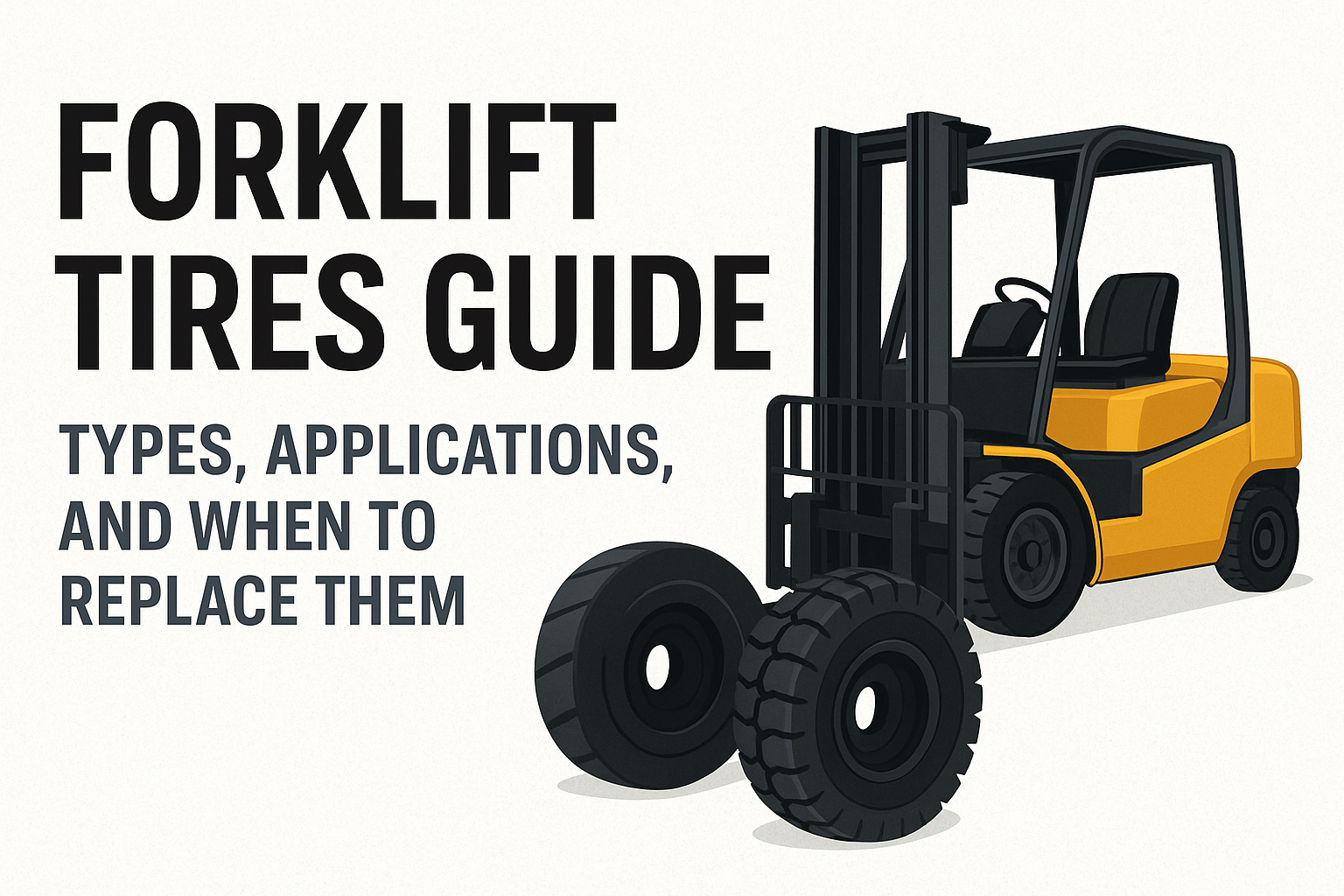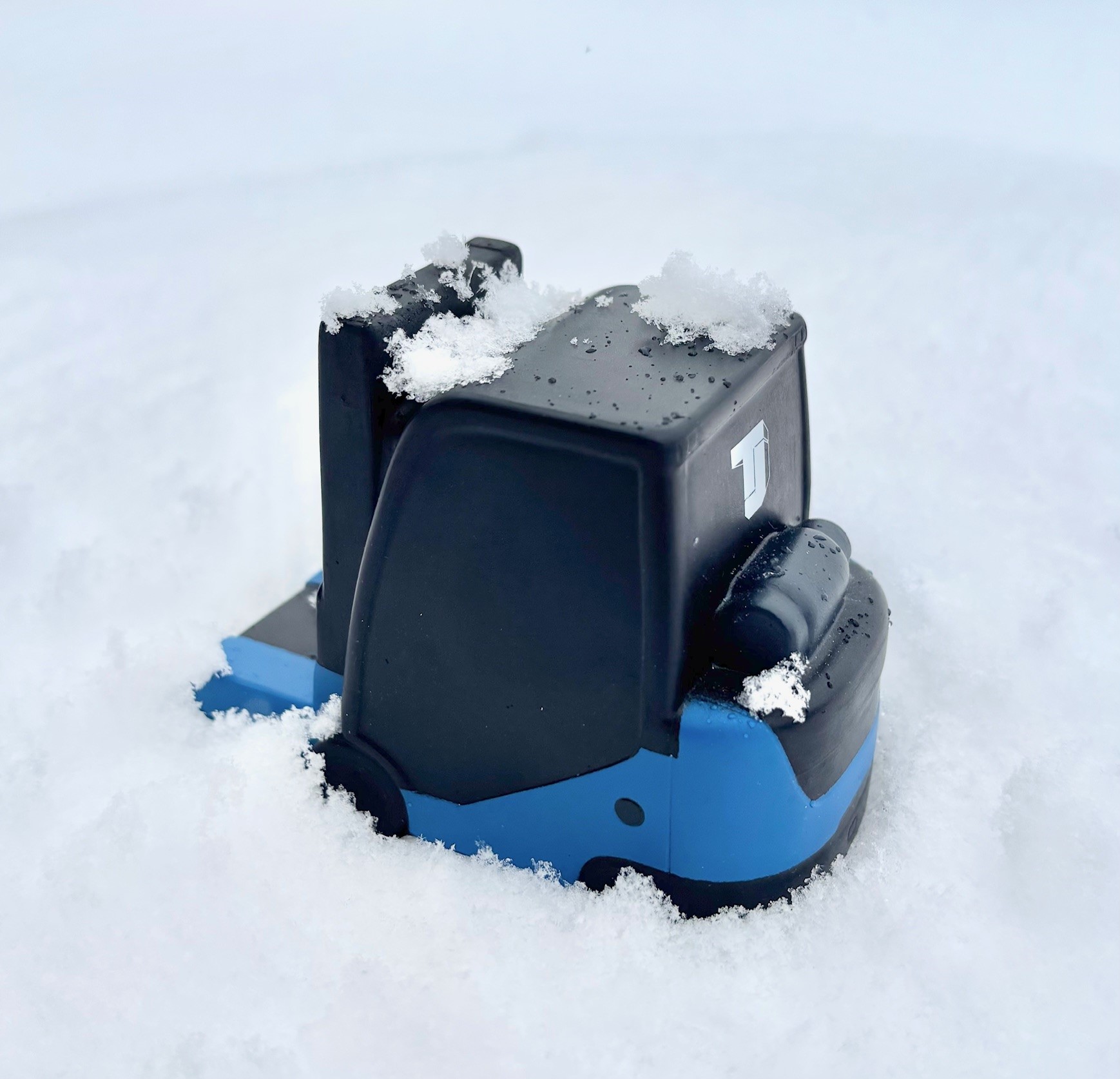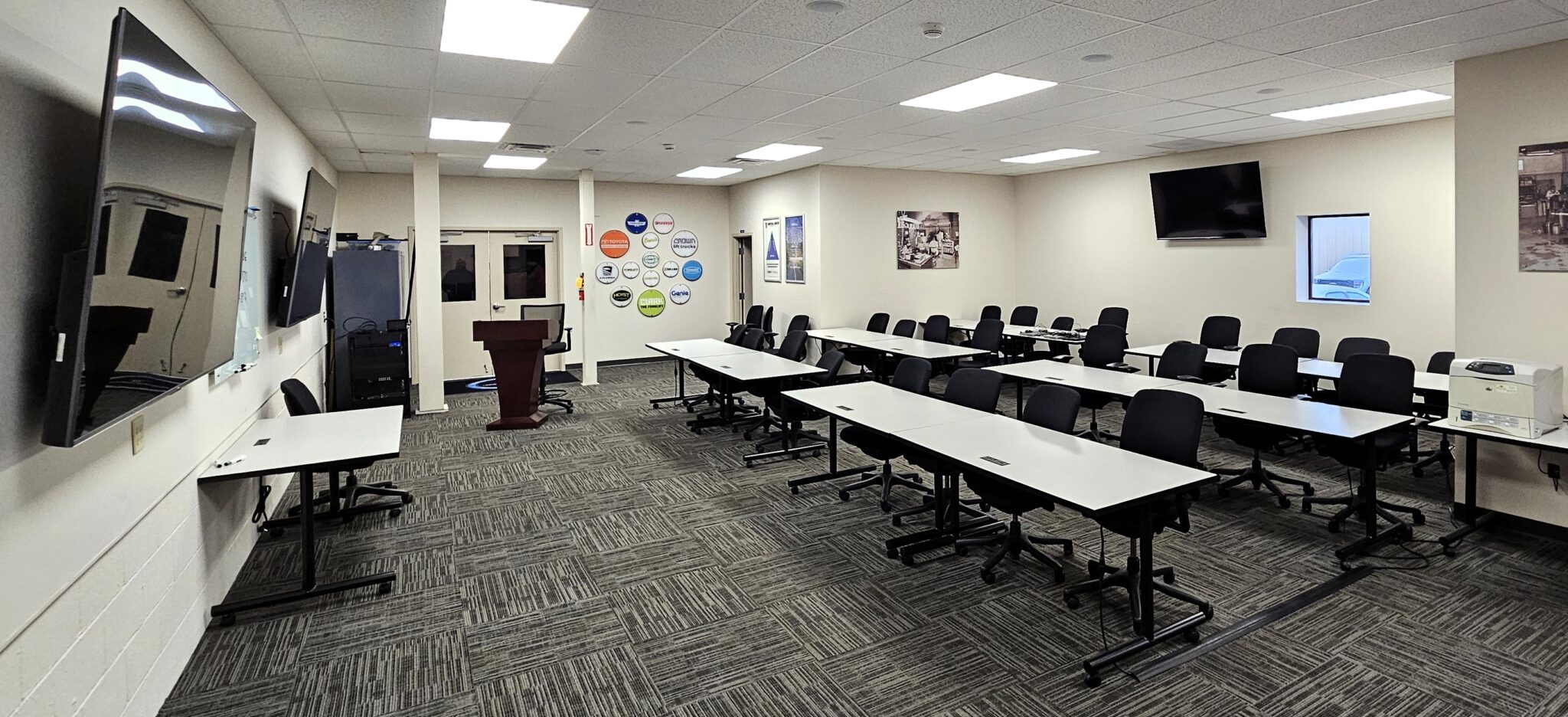Choosing the right forklift tires is critical for safety, performance, and reducing operating costs. Tires affect everything from traction and load capacity to operator comfort and energy consumption. Whether your forklifts operate in a warehouse or on rugged outdoor terrain, knowing which tire to use – and when it’s time for forklift tire replacement – can keep your operation running smoothly.
This guide explains the different types of forklift tires, when to use them, how to tell when they’re worn, and how often to replace forklift tires.
What Are the Main Types of Forklift Tires?
- Cushion Tires for Indoor Forklifts
Cushion tires are made by bonding solid rubber to a metal band. Their smaller size gives forklifts a tighter turning radius, making them the best option for:
- Indoor warehouse operations
- Narrow aisle forklifts
- Smooth concrete floors
Cushion tires can be used outdoors, but only on smooth surfaces and for light-duty work.
🔹 Polyurethane cushion tires are also available. These increase carrying capacity by up to 64%, reduce rolling resistance, and improve battery life and fuel efficiency. However, they offer less traction and cushioning, which can be a drawback on uneven ground.
2. Pneumatic Forklift Tires for Outdoor Applications
Pneumatic tires look like truck tires and are filled with air (or foam). Built with deep tread, reinforced sidewalls, and durable rubber compounds, they provide traction, stability, and operator comfort. They are the top choice for:
- Heavy-duty outdoor forklift applications
- Rough or uneven surfaces
- Industries like construction, lumber, and shipping
🔹 Foam-filled pneumatic tires eliminate the risk of flats, reducing downtime.
🔹 Solid pneumatic tires are made entirely of rubber but shaped like air-filled tires. They’re ideal for extreme environments like scrap yards, recycling facilities, and demolition sites, where punctures are common.
3. Non-Marking Forklift Tires
If your operation requires spotless floors, non-marking forklift tires are a smart choice. These are made without carbon black and instead use hydrated silicas to prevent black tire marks.
Best for:
- Food & beverage facilities
- Pharmaceutical warehouses
- Retail distribution centers
⚠️ Keep in mind: non-marking forklift tires wear about 25% faster than standard black rubber tires.
How to Tell When Forklift Tires Need Replacing
Knowing when to replace forklift tires is key to safety and performance. Here are the most common signs of worn forklift tires:
- Wear Line Reached: Most forklift tires have a 50% wear line – once it’s visible, it’s time for replacement.
- Chunking or Cracks: Pieces of rubber breaking off means the tire is unsafe.
- Flat Spots: Caused by frequent pivoting, flat areas reduce stability and operator comfort.
- Loss of Traction: Slipping or sliding indicates tires are no longer gripping properly.
- Increased Vibration: Excessive shaking means the tire is no longer cushioning the machine.
How Often Should Forklift Tires Be Replaced?
The lifespan of a forklift tire depends on the application, environment, and operator habits. On average:
- Cushion tires last about 2,000–3,000 operating hours
- Pneumatic tires last about 3,000–4,000 hours
Daily inspections are recommended. If you notice any of the wear signs above, it’s time for forklift tire replacement – waiting too long can increase fuel use, damage the forklift, and create safety risks.
Choosing the Best Forklift Tire for Your Application
Some forklifts require a specific type of tire, but if you have options, here’s a quick guide to choosing:
- Indoor warehouse operations → Cushion tires
- Outdoor heavy-duty work → Pneumatic or solid pneumatic tires
- Clean floor environments → Non-marking cushion or pneumatic tires
Final Thoughts: Keep Your Forklifts Rolling Smoothly
Your forklift tires are more than just wheels – they’re a critical safety and performance component. The right tire improves efficiency, protects equipment, and reduces downtime. Replacing forklift tires on time ensures your fleet stays productive and safe.
👉 Not sure which forklift tire is right for your operation? Need forklift tire replacement in Central New York? Call Thompson & Johnson today to speak with one of our equipment specialists, or fill out a Customer Request Email Form. We’ll help you find the best tire solution for your forklifts.
Thompson & Johnson has everything you need to keep your fleet running smoothly:
- 🛠️ Forklift Parts & Service – including tire replacement and maintenance
- 🚜 New & Used Forklifts – choose the right equipment for your operation
- 🔄 Forklift Rentals – flexible options when you need equipment fast
- 🎓 Operator Training Programs – extend tire life and improve safety with certified training




